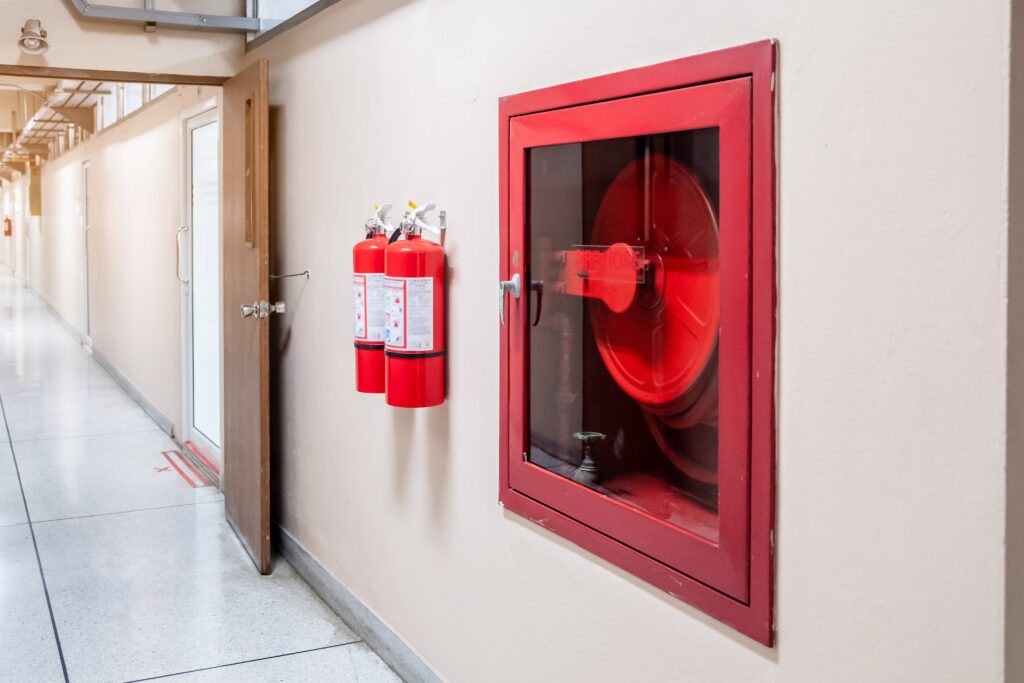Key Takeaways
- ISO vs. NFPA Synergy
Combining ISO Standards with NFPA Codes elevates fire safety, risk management, and overall operational excellence. - Global & Technical Reach
ISO provides broad management systems on an international scale, while NFPA focuses on technical fire and explosion prevention requirements. - Certification vs. Compliance
ISO involves third-party audits for certification, whereas NFPA demands code compliance, often enforced by local authorities. - Boosted Workplace Safety
Adopting both frameworks fosters a culture of continuous improvement, safeguards workers, and protects community well-being.
ISO vs NFPA in Oil and Gas
In the oil and gas industry, safety cannot be left to chance. Two powerhouse frameworks—ISO Standards and NFPA Codes—play pivotal roles in Risk Management, Occupational Health and Safety, and Fire Safety Standards. Understanding their differences and leveraging them in tandem can strengthen your organization’s Continuous Improvement initiatives, ensuring Global Regulatory Compliance and a safer workplace overall.
This article delves into the key distinctions between ISO vs NFPA standards in the oil and gas sector. Additionally, we will explore how FAT FINGER’s digital workflows can help you navigate these standards effectively.
Request a demo today to see how FAT FINGER can streamline your compliance processes.
ISO Meaning: International Organization for Standardization

- What does ISO stand for? ISO refers to the International Organization for Standardization, a network comprising over 160 national standards bodies.
- Global Authority: Its guidelines foster efficiency, Process Safety Management, and accountability across diverse industries.
ISO is recognized worldwide for its role in harmonizing industrial best practices. This global reach makes it indispensable for companies seeking operational consistency and credibility across borders.
What Is the Purpose of ISO Standards? (And Where to Learn More)
ISO Standards serve as comprehensive blueprints that drive quality, Environmental Sustainability, and Occupational Health and Safety. They are particularly relevant in high-risk sectors like oil and gas.
- Framework for Excellence
ISO promotes Continuous Improvement and robust Management Systems, steering companies toward operational clarity and consistency. - Facilitating International Trade
ISO Certification showcases global credibility, an invaluable asset when forging new partnerships or expanding into untapped markets. - Promoting Workplace Safety
Standards like ISO 45001 address hazard identification and risk mitigation, aligning perfectly with Process Safety Management goals.
For a deeper dive into how ISO shapes modern industries, refer to our companion article, “What Is ISO.”

How NFPA Shapes Safety: Meaning & Key Codes
The NFPA offers authoritative guidelines on preventing fires and explosions. Its codes are especially critical when working with flammable substances common in oil and gas operations.
NFPA Meaning: National Fire Protection Association
- What does NFPA stand for? NFPA is the National Fire Protection Association, a U.S.-based body that publishes widely adopted Fire Safety Standards.
- Regulatory Influence: Although it began in the United States, NFPA Codes such as NFPA 30, NFPA 70, and NFPA 58 guide Fire Risk Assessment and Emergency Response Planning worldwide.
What Is the Purpose of NFPA? (And Why It’s Crucial)
NFPA’s mission is to minimize fire-related hazards, a cornerstone of safety within any high-risk industry. Its guidelines help facilities avert catastrophic events and bolster community trust.
- Fire Prevention and Mitigation
NFPA details how to store and handle flammable materials safely, ensuring tighter controls and fewer incidents. - Life Safety and Environmental Protection
By reducing fire and explosion risks, NFPA safeguards workers, neighboring communities, and local ecosystems. - Regulatory Benchmark
Many jurisdictions embed NFPA Compliance into law, making it a standard tool for Facility Inspections and audits.

ISO vs NFPA: Are They The Same?
While both ISO and NFPA standards aim to enhance safety, efficiency, and operational standards, each approaches this goal from a unique angle.
Let’s explore how they differ:
- Broad Systems vs. Technical Requirements
- ISO Standards: Emphasize management systems, quality control, and Continuous Improvement.
- NFPA Codes: Focus on engineering specs, Process Safety Management specifics, and Fire Safety Standards.
- Certification vs. Compliance
- ISO Certification: Requires third-party audits and evidence of adherence to frameworks like ISO 9001 or ISO 45001.
- NFPA Compliance: Usually enforced by government agencies, Authorities Having Jurisdiction (AHJs), and local fire marshals.
- Global vs. U.S. Origins
- ISO: Adopted internationally, covering a vast array of operational domains.
- NFPA: Rooted in U.S. regulations but recognized worldwide for its technical depth on fire and explosion prevention.
Why Integrating ISO and NFPA Is a Must for Oil and Gas
Combining ISO Standards with NFPA Codes provides a more holistic approach to safety, improving everything from Facility Inspections to Emergency Response Planning.
- Comprehensive Gap Analysis
Evaluating your practices against both ISO and NFPA identifies weaknesses in documentation, training, and Hazard Identification. - Unified Management Systems
A well-developed Occupational Health and Safety program under ISO 45001 can incorporate NFPA best practices for flammable liquids, electrical safety, and Process Safety Management. - Leveraging Technology for Efficiency
Digital tools support Continuous Auditing, track NFPA Compliance, and streamline Facility Inspections, ensuring problems are caught and resolved quickly. - Ongoing Training
- ISO-Focused: Encourage robust process documentation and performance metrics.
- NFPA-Focused: Educate workers on handling combustible materials, implementing electrical safety, and responding to emergency scenarios.
Leverage FAT FINGER’s digital workflows to seamlessly incorporate ISO and NFPA standards, streamline compliance, and drive safety excellence across your operations.
Learn more About FAT FINGER in this video:
How Embracing ISO and NFPA Protects People and Profits
Embracing both ISO and NFPA doesn’t just satisfy auditors—it establishes a culture of excellence and accountability.
- Stronger Workforce Protection
Reduced accidents and fires mean fewer injuries and downtime, building a workforce that feels secure and valued. - Community Trust
Safe facilities and clear emergency protocols reassure local residents and stakeholders, enhancing your reputation. - Operational Excellence
ISO Certification requires Continuous Improvement, and NFPA Compliance decreases incident-related disruptions, combining to boost productivity and profit margins.
Pitfalls to Avoid: Common Mistakes with ISO and NFPA
Even the best frameworks can fail without a solid implementation strategy. Avoid these common errors for a smoother experience.
- Treating Standards as Optional
In some regions, ISO or NFPA might not be mandated. Ignoring them, however, leaves you vulnerable to major incidents and liabilities. - Stopping at the Badge
Achieving ISO Certification isn’t the end—keep refining processes through Continuous Auditing and training. - Overlooking Local Rules
Some countries have stricter regulations that complement or override ISO and NFPA requirements. Stay informed to remain compliant. - Underestimating the Human Factor
Even rigorous protocols need buy-in from employees at every level to succeed fully.
How FAT FINGER Can Help

Navigating the complexities of ISO and NFPA standards can be challenging. This is where FAT FINGER’s digital workflows come into play.
FAT FINGER offers powerful safety checklists that can help you ensure compliance with both ISO and NFPA standards:
- Take 5 Safety: A quick safety check to identify potential hazards before starting a task.
- Near Miss Reporting: Capture and report near-miss incidents to prevent future accidents.
- Job Hazard Analysis: Identify and mitigate risks associated with specific tasks.
- Risk Assessment: Conduct comprehensive risk assessments to identify and control hazards.
- Incident Reporting in the Workplace: Report and investigate incidents to prevent recurrence.
- Journey Report: Document and review journeys to ensure safe travel practices.
These checklists are designed to be user-friendly and customizable, allowing you to tailor them to your specific needs. By using FAT FINGER, you can streamline your compliance processes, reduce risks, and enhance overall safety and efficiency.
Final Word: Creating a Culture of Continuous Improvement
In oil and gas, a robust safety culture is vital. By weaving together ISO Standards and NFPA Codes, you fortify your approach to Process Safety Management, slash risks, and pave the way for ongoing success. Whether you’re focusing on Risk Management, Fire Safety Standards, or Occupational Health and Safety, combining these two frameworks can set your operation apart—protecting both people and profits for years to come.
Leverage FAT FINGER’s digital workflows to seamlessly incorporate ISO and NFPA standards, streamline compliance, and drive safety excellence across your operations.

